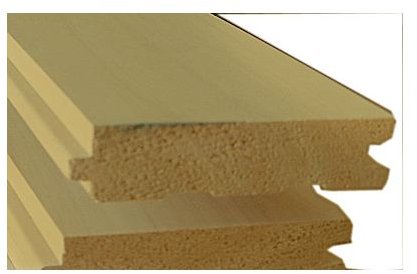Eco Friendly Kitchen Floors from Bamboo to Rubber
Eco friendly kitchen floors aren’t just a trend and they needn’t break the budget when remodeling a kitchen. Selecting a sustainable material as a flooring option adds value to your home, making it a long-term investment. A durable floor derived from a sustainable or renewable material not only makes your kitchen more green, it may put more green in your pocket when it comes time to sell your house. Choose from various materials for an eco friendly floor including bamboo, cork, linoleum and rubber.
Bamboo
Bamboo flooring comes in planks that are available in a tongue and groove or “snap together” design. Bamboo, a grass, is a renewable material; it is prolific in growth and can be harvested within six years. Bamboo flooring is readily available from home improvement stores. The material costs on average, from $2 to $6 a square foot. Maintain your bamboo floor with cleaning products designed to clean wood floors.
Cork
The cork used for flooring is harvested from cork trees throughout the Mediterranean. The bark is peeled from the tree, leaving the tree unharmed, and the bark grows back. Cork is a renewable resource and makes for a soft, resilient flooring material. Cork flooring tiles are easy to install. Like bamboo planks, they have a snap together tongue and groove construction. The average cost for this type of flooring may be as high as $6 per square foot and higher in some areas, depending on availability. Cork flooring may be damp mopped with a mild soap and water solution.
Linoleum
Unlike vinyl, a synthetic material, linoleum flooring is derived from natural materials. The main component is linseed oil, which is then mixed with wood flour, powdered cork and ground limestone, among other materials. Linoleum backing is made from jute, a grass, and the flooring is recyclable and bio-degradable. Linoleum can be mopped with a general cleaning product to disinfect. It is durable and resilient, making it comfortable underfoot. It is readily available and the price is on average from $2 to $7 a square foot, depending on the style.
Rubber
Though this material can be manmade, natural rubber is derived from the sap of rubber trees, which grow primarily in Asia. However, rubber flooring may also be made from such items as recycled tires, making it a type of recycled eco-friendly flooring. It’s also more resilient than other materials. For those who spend a lot of hours in the kitchen, rubber flooring may provide a more body-friendly option. There are drawbacks, however. Rubber flooring is flammable and does “off-gas”, meaning it gives off a distinct chemical odor for up to a year after installation. Though considered a renewable resource and eco friendly when made from recycled tires, it is not necessarily a popular option with homeowners, in spite of costing as low as $3 a square foot.
Considerations
Eco friendly kitchen floors may be defined as any flooring that is derived from a renewable, sustainable or recycled source. But the material isn’t the only consideration. If a flooring product isn’t readily available locally, then the transportation costs may make the flooring less environmentally friendly.
References and Credits
HGTV.com: https://www.hgtv.com/kitchens/natural-alternatives-to-vinyl-flooring/page-2.html
Bob Villa.com: https://www.bobvila.com/HowTo_Library/Cork_Flooring_for_Soft_Footing-Miscellaneous_Floors-A1578.html
Green Floors.com: https://www.greenfloors.com/HP_Linoleum_Index.htm
Green Home Guide.com: https://greenhomeguide.com/know-how/article/navigating-the-flooring-thicket-find-the-greenest-way-to-meet-your-needs#rubber
Image credit: Shelly McRae
